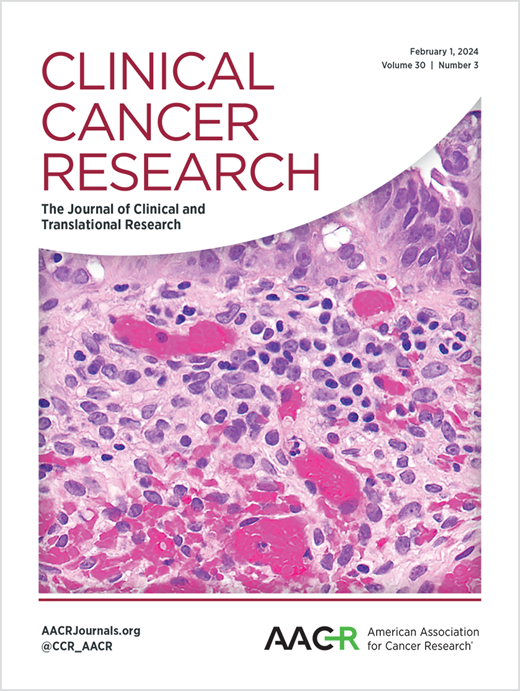Bladder Preservation with Durvalumab plus Tremelimumab and Concurrent Radiotherapy in Patients with Localized Muscle-Invasive Bladder Cancer (IMMUNOPRESERVE): A Phase II Spanish Oncology GenitoUrinary Group Trial
IF 10
1区 医学
Q1 ONCOLOGY
引用次数: 0
Abstract
Purpose: The combination of radiation and immunotherapy potentiated antitumor activity in preclinical models. The purpose of this study is to explore the feasibility, safety, and efficacy of a bladder-preserving approach, including dual immune checkpoint blockade and radiotherapy, in patients with muscle-invasive bladder cancer (MIBC). Patients and Methods: Patients with localized MIBC underwent transurethral resection, followed by durvalumab (1,500 mg) plus tremelimumab (75 mg) every 4 weeks for three doses and concurrent radiotherapy (64–66 Gy to bladder). Patients with residual or relapsed MIBC underwent salvage cystectomy. The primary endpoint was complete response, defined as the absence of MIBC at posttreatment biopsy. Secondary endpoints were bladder-intact disease-free survival, distant metastasis–free survival, and overall survival. Results: Thirty-two patients were enrolled at six centers. Complete response was documented in 26 (81%) patients. Two patients had residual MIBC, and four patients were not evaluated. After a median follow-up of 27 months, 2 patients underwent salvage cystectomy. The 2-year rates for bladder-intact disease-free survival, distant metastasis–free survival, and overall survival were 65%, 83%, and 84%, respectively. The 2-year estimates of non–muscle-invasive bladder relapse, MIBC, and distant metastasis were 3%, 19%, and 16%, respectively. Grade 3 to 4 toxicities were reported in 31% of patients, with diarrhea (6%) and acute kidney failure (6%) being the most frequent. Conclusions: This multimodal approach including durvalumab plus tremelimumab with concurrent radiotherapy is feasible and safe, showing high efficacy in terms of response and eliciting bladder preservation in a large number of patients. Further research on this approach as an alternative to cystectomy is warranted.求助全文
约1分钟内获得全文
求助全文
来源期刊

Clinical Cancer Research
医学-肿瘤学
CiteScore
20.10
自引率
1.70%
发文量
1207
审稿时长
2.1 months
期刊介绍:
Clinical Cancer Research is a journal focusing on groundbreaking research in cancer, specifically in the areas where the laboratory and the clinic intersect. Our primary interest lies in clinical trials that investigate novel treatments, accompanied by research on pharmacology, molecular alterations, and biomarkers that can predict response or resistance to these treatments. Furthermore, we prioritize laboratory and animal studies that explore new drugs and targeted agents with the potential to advance to clinical trials. We also encourage research on targetable mechanisms of cancer development, progression, and metastasis.
 求助内容:
求助内容: 应助结果提醒方式:
应助结果提醒方式:


